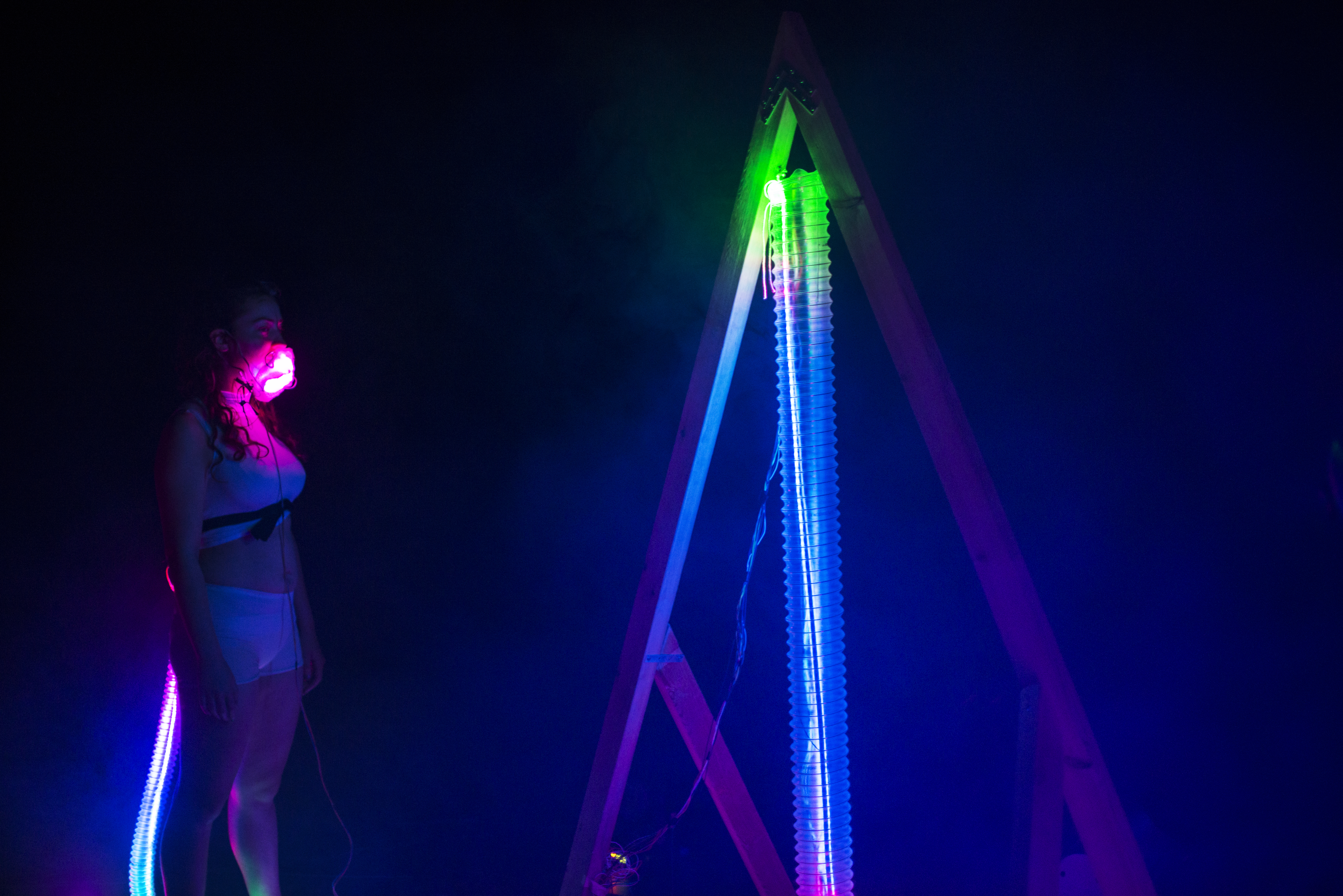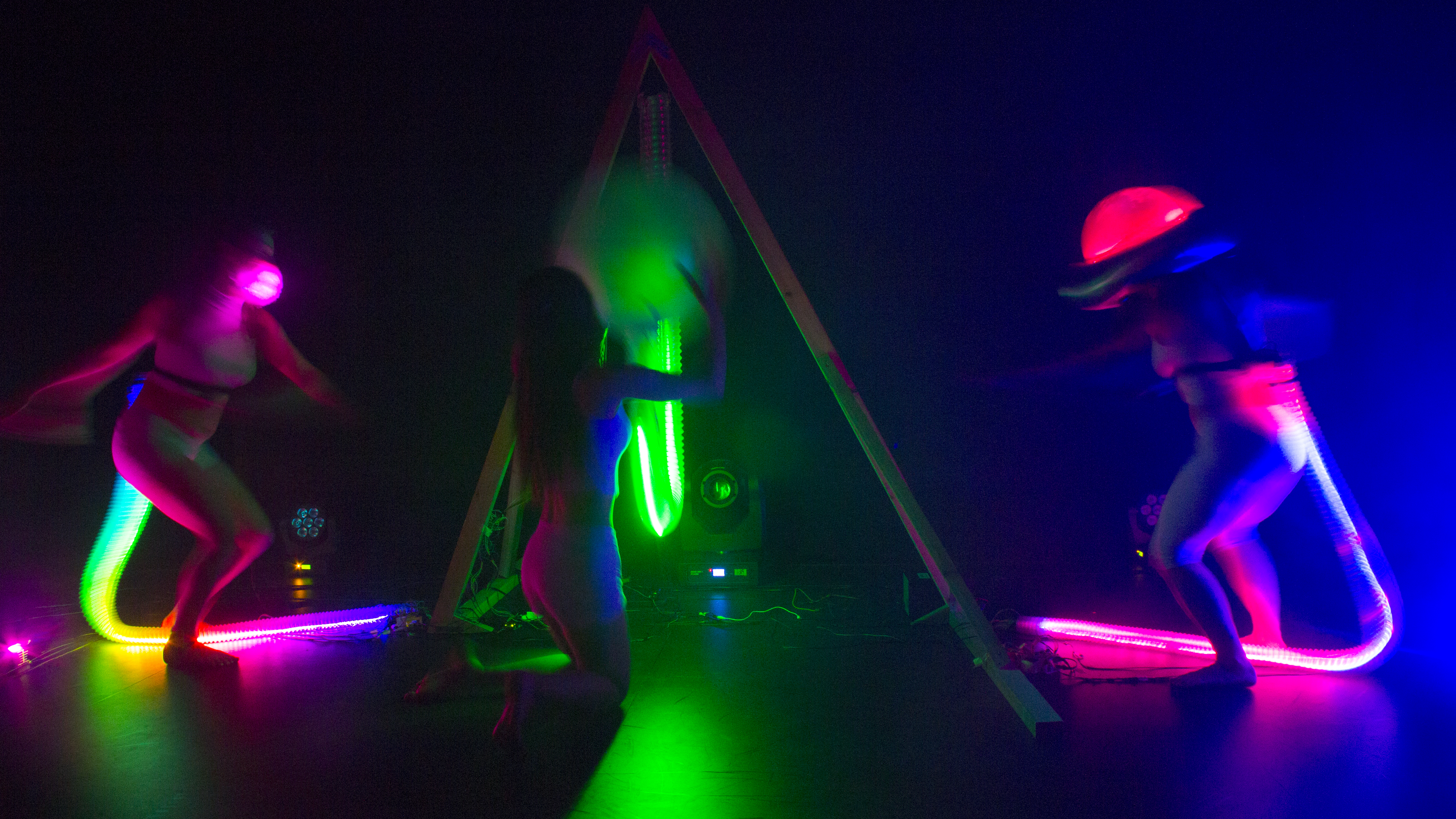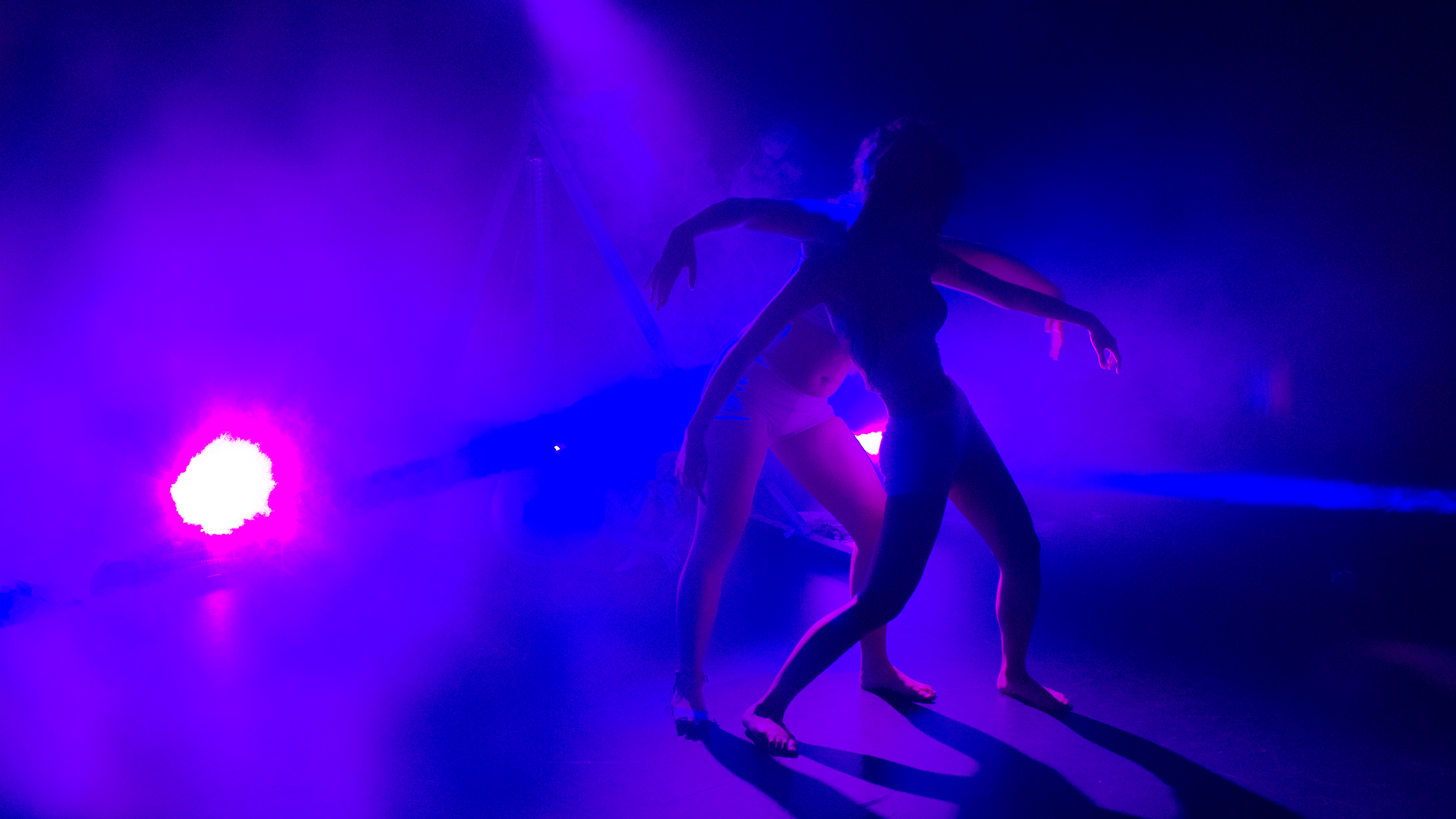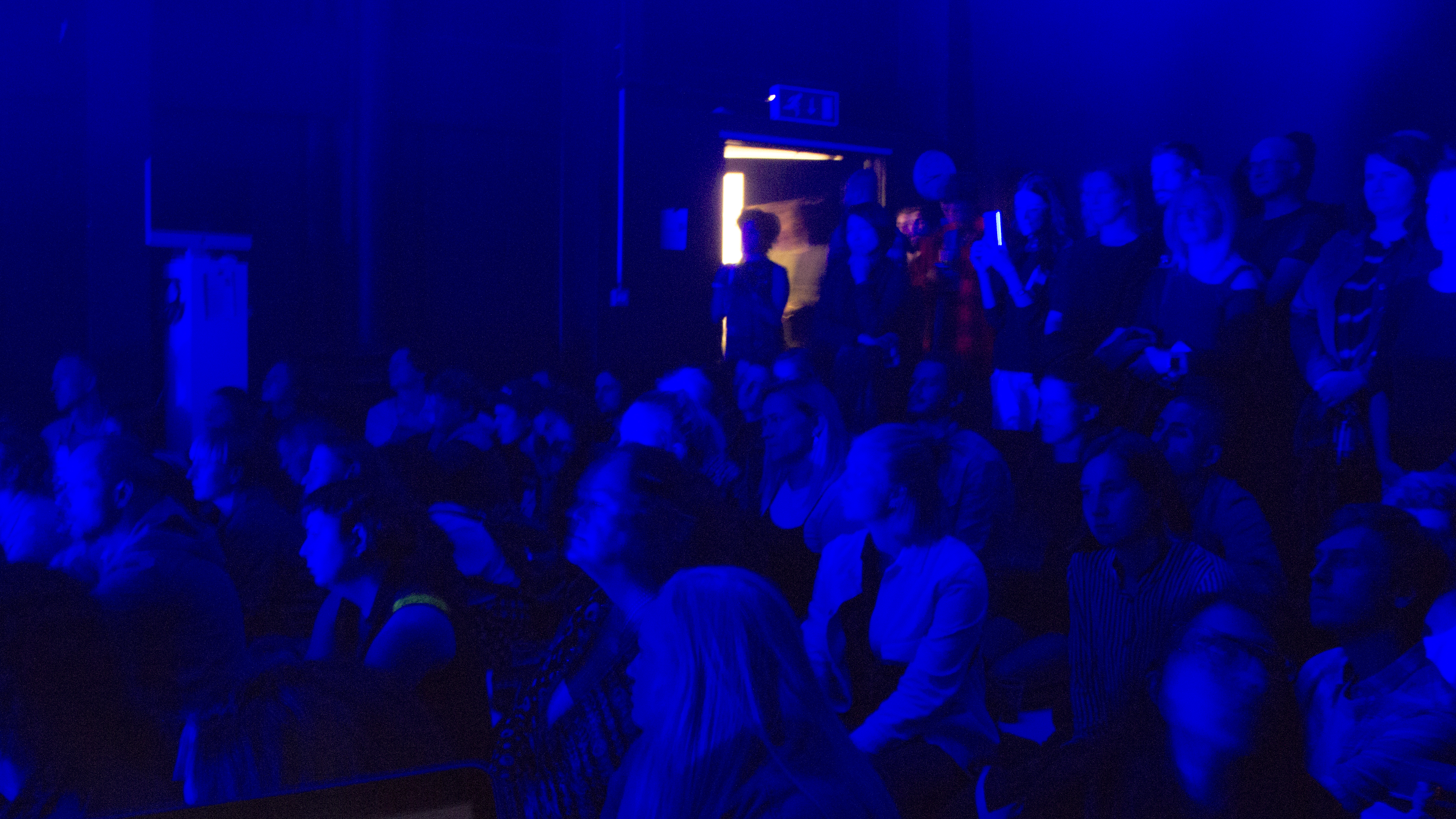This work also featured on Designboom
Concept
Baptism is a performance that explores shamanic practices of rituals, divination and healing. It presents a digital interpretation of the shamanic process of contacting the spiritual world while in an altered state of consciousness. Staged in a spiritual dimension and with a focus on the practice of exorcism, Baptism represents three different stages of the Shaman’s journey; ecstasy/trance, travelling and healing.
The first stage depicts the process of entering into a trance like state in order to reach the other world. The Shaman (Angakkoq) must be careful, if he loses control, he risks losing his soul. The second stage represents travel. Whilst still in a deep trance, the Shaman must journey to meet the “Mother of the Sea” and her spirit helpers. The shaman and their spirit helpers are the only ones who can approach the “Mother of the Sea” during the ritual. The third stage symbolizes the retrieval of a patient's lost soul from another world during a healing ritual.
Interaction
Wearable technologies assist the performers in embodying the idea of transformation. High voltage, dimmable LEDs are controlled with IMU data (Accelerometer, Gyroscope and Magnetometer) collected from the performers movements. Commanding body language is used to direct beams of lights and create the sense of a feedback loop between the physical world and the spiritual world, using DMX (protocol) and a Kinect. These techniques, combined, create an immersive depiction of a new age ritual.The aesthetics and scenography of Baptism are outlandish, grotesque and vaporwave, creating a feeling of synesthesia within performers and spectators.
Full Video
Process Video
First Stage/ Ecstasy
A Shaman’s role is to make contact with and process spirits, to establish communication on behalf an individual or society as a whole.
"Ideally, the shaman does not slip in and out of an Altered State of Consciousness unpredictably, his “soul loss” is controlled and ritualized. What was once a spontaneous crisis is now a controlled ecstasy in which he had mastered the techniques and learned parameters of celestial space."
I used commanding bodily language to generate data as a methodology. The pixels of the lights are mapped by the movements of the performer. For example, when the performer bends at the waist (Fig.1), the substance of spirits will be visualized by dynamic responses in lights. The energy of the Shaman will be transformed by tilting of the body. When two performers bow at the same time, the flashing mode of 6 LEDs will be triggered (Fig.2). The rainbow colour will be visualized when the body is twisted (Fig.3). The three modes of lights symbolize the different stages of the trance; light trance, nightly dreams and deep rance.




The performer who is controlling the ball symbolizes communication with the spiritual world at the first stage, demonstrating the process of exchanging spirits in a state of ecstasy (Fig.4). When going through Nightly dreams.
"Dreams in which the spirits appear as helpers and informants."
I used the sphere as a ritualistic tool. When the performer throws the ball through the y-axis, it symbolizes the exchange of spirits.


Second Stage/ Travelling
The Shaman is shown travelling to the “Mother of the Sea” or “Land of the Dead” to make contact with the deceased and bring back souls which have gone astray. An interesting aspect of travelling is that it shows the conflict of the Angakkoq with numerous angry or evil forces and the strength of his helping spirits in assisting him.
I used simplistic elements, such as dots and curved lines, with white washes to mimic the process of travelling to the other worlds (Fig.5 & 6).


Two performers struggled and contorted on the floor depicted the hazard of the travelling process. The dangerous journey lasts all night until dawn.

Third Stage/ Healing
To the Shaman, disease can be interpreted as being caused by the soul leaving the body or something alien penetrating the patient. The soul must be retrieved by the Angakkoq from the “Land of the Dead”, or it may go astray.
“you can make up your own mind, as I think that the word of God and a sensible Angakkoq has equal strength”


When a person feels sick, the Shaman could seek advice by creeping up on a platform and placing himself with his back to the room, covered with skin and skins under him. As if transported to the spirit world, silent and pondering, he will communicate with spirits, who reveal the nature of the sickness.


I used more trance-like colors to represent this procedure and beams to represent the medicinal substance in the process of healing (Fig.9).

Dying
"Severe illness is ascribed to soul loss. The soul might have goneastray or been stolen by an Angakkoq or an Ilisiitsoq"
All illness is believed to be due to the soul being damaged or stolen. So during the healing, the Angekkoq’s mission is to bring the soul back or to repair the damaged soul. They will travel to the lower world or horizon to get the soul back. If the soul has been too badly damaged, then the person must die.
At the end of the last stage, I used three strobes to create a white and black flash effect, representing the procedure of the patient dying and the hostile peaceful erosion of the souls.


Thanks

Performer:
Beatrice Perini, Yerin Lee, Sasha Mattock
Music Producer:
John.Xie, Joy Lee
Special thanks:
Thank Arturas for helping with physical computing and testing.
Thank Terry for offering code of Kinect skeleton tracking with DMX and induction of lights.
Thank Alex, Clare for proofreading and supporting, Pedro and Rita for supporting.
Thank Theo, Atau and Lior gave me feedbacks and offering supports.
Thank Konstantin, Pete and Nicky for helping set up and offering supports.
Thank Garrett Laroy Johnson for bringing inspirations and answering questions
Thank Howard, Saskia, Amy, Charlotte, Alix and Sabrina for organising the show.
Thank Luis, Mehrbano, Nadia and Sand's help during the show.
Thank Qiuhan Huang, Jakob, Judith, Erica and Kim for helping.
Thank Gregory
Reference
JAKOBSEN, M. D.(1999) Shamanis: Traditional and Contemporary Approaches to the Mastery of Spirits and Healing. New York: Berghahn Books
Shamanism. (1995). [Seoul], Republic of Korea: Korean Overseas Information Service.
O'Neil, D., Hannigan, E., Beatty, J. and O'Neill, D. (1993). Shaman. London: Titan Books Ltd.
Levy, R. and Bruce, E. (2010). Shamanism. Lanham: John Hunt Publishing.
Brown, R. (1993). Theology. Independence, Mo.: Graceland/Park Press.
